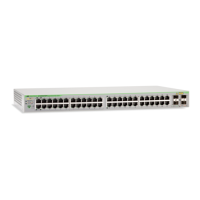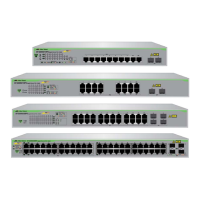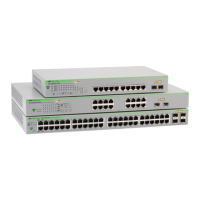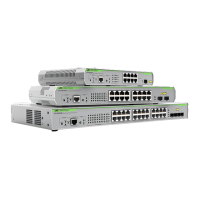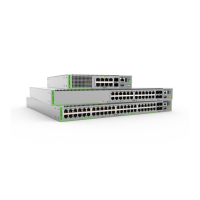Chapter 1: Product Description
19
For example, if an end-node is capable of only 10 Mbps, the switch sets
the port connected to the end-node to 10 Mbps.
Duplex Mode
Each twisted pair port on the switch can operate in either half- or
full-duplex mode. The twisted pair ports are IEEE 802.3u-compliant and
automatically negotiate the duplex mode setting.
In order for the switch to set the duplex mode for each port correctly,
the end-nodes that you connect to the switch ports also need to be
configured for Auto-Negotiation. Otherwise, a duplex mode
mismatch can occur, affecting network performance. For further
information, refer to “Duplex Mode” on page 21.
Cabling
Table 4 contains the cabling specifications for the twisted pair ports.
Auto MDI/MDI-X
All of the twisted pair ports on the switch feature auto-MDI to automatically
configure themselves as MDI or MDI-X when connected to an end-node.
Consequently, you can use a straight-through twisted pair cable to
connect any network device to a port.
Power Connector The AT-GS910/5, AT-GS910/8, AT-GS910/16, and AT-GS910/24
switches have a single AC power supply socket on the back panel. The
AT-GS910/5E and AT-GS910/8E switches have a single DC power supply
socket on the back panel. Use the power adapter that came with the
switch.
To power ON or OFF the switch, connect or disconnect the power cord.
Table 4. Twisted Pair Cabling and Distances
Speed Type of Cable
Maximum
Operating
Distance
10 Mbps Two-pair Category 3 or better
unshielded twisted pair cable
100 m (328 ft)
100 Mbps Two-pair Category 5 unshielded
twisted pair cable
100 m (328 ft)
1000 Mbps Four-pair Category 5e unshielded
twisted pair cable
100 m (328 ft)
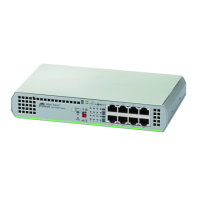
